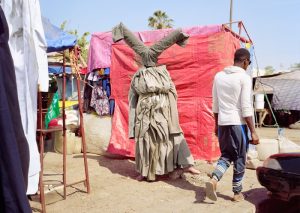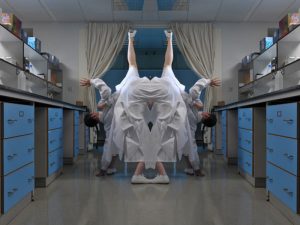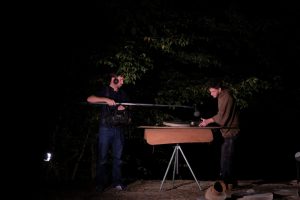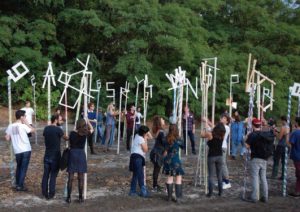New scientific techniques, such as CRISPR-Cas9 have raised debates about whether or not we will soon be able to get babies à la carte and whether this will be ethically acceptable.
If making designer babies ever becomes acceptable, genome modification would not be used solely for therapeutic reasons (to eliminate genes causing disorders such as cystic fibrosis for example) but for enhancement. Parents who can afford the expense would then be able to ask labs to give them a full list of the traits they can select for their child and ensure that he or she will be faster, smarter, stronger and sexier than their peers.
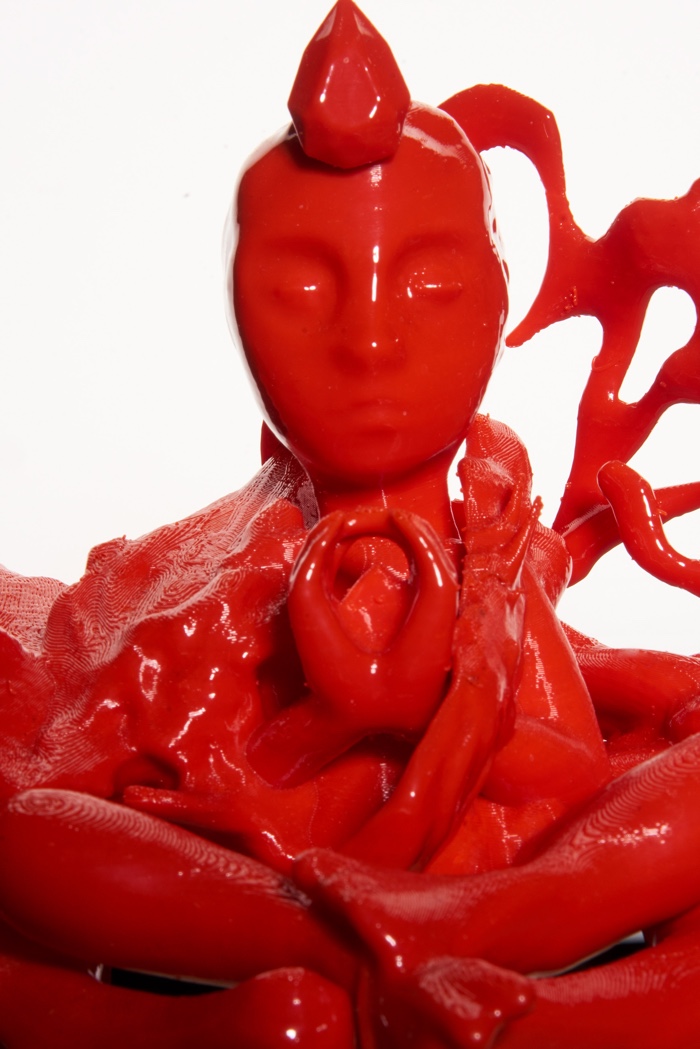
Pınar Yoldas, Genetically Modified Generation (Designer Babies), 2016-2017
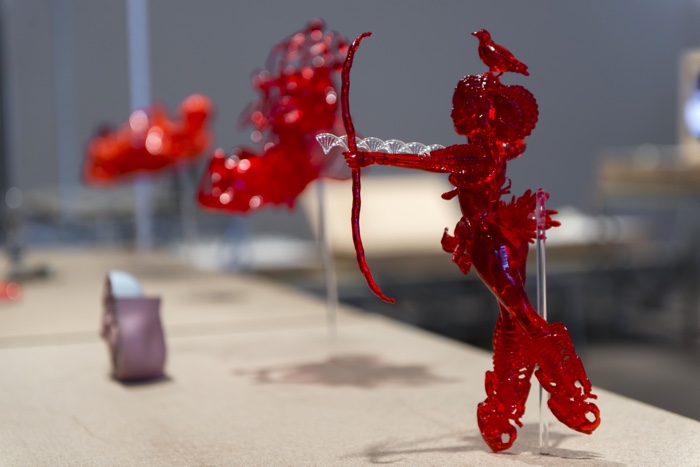
Pınar Yoldas, Genetically Modified Generation (Designer Babies), 2016-2017. Installation view at the Scales School exhibition, Pera Museum. Photo by Kayhan Kaygusuz
Artist and researcher Pinar Yoldas is participating to A School of Schools, the 4th edition of the Istanbul Design Biennial, with nine delicate 3D printed statuettes – one for each month of human pregnancy – that reflect the characteristics of gods and goddesses in Greek mythology.
Her installation Genetically Modified Generation (Designer Babies) invites us to consider the societal impact of a gene editing tool that might in the future allow some of us to tweak human DNA and ‘play god’ with future generations of children.
Yoldas’ designer babies have been genetically altered to be superior beings. They are endowed with truly exceptional levels of intelligence, beauty, clairvoyance, longevity, social status or even moral reasoning. Each of them has grown in a very peculiar environment that only enhances their specific and extraordinary gift but that makes it difficult to distinguish whether their identity has been shaped mainly by their background, by their education or by the fact that their genes have been ‘improved.’ What is sure is that these god-like individuals come with their own insecurities and weaknesses. They are scientific marvels, military experiment, display of privilege and power or cultural artifacts as much as they are flawed human beings.
Let me introduce you to a couple of these kids:
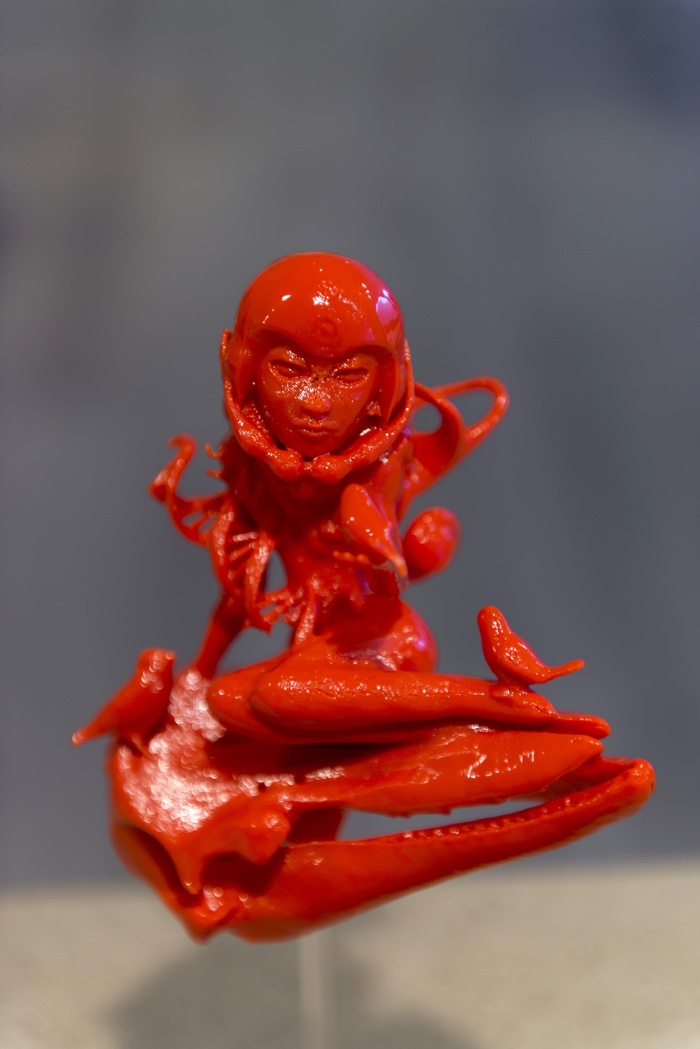
Pınar Yoldaş, Genetically Modified Generation (Designer Babies), 2016-2017. Installation view at the Scales School exhibition, Pera Museum. Photo by Kayhan Kaygusuz
Boreas is the first designer baby to have been gifted with a superpower. His is longevity. He was “made in China”, the first country to edit the genes of human embryos using the CRISPR-cas9 tool back in 2015. It has also often been said that China, or at least its government, is more tolerant towards programs that could be regarded as “eugenics” such as selective abortion of fetuses with severe genetic disorders.
Kronos was born at Duke University Hospital. The identity of his parents is classified, all we know is that his birthgiver was a third-year graduate student in that university. She had agreed to deliver him to pay her student loans. 6 months after his birth, Kronos was relocated to an education facility and bred to have perceptual time wrapping. He’s an ongoing experiment and his progresses, his ability to slow down or accelerate time, are carefully monitored by the team of scientists who take care of him.
My favourite in the group is Artemis because there’s something almost inevitable about her existence. Her parents are Nike. She’s an athlete (what else?) engineered to serve the American corporation’s propaganda. Whether she finds her role and existence ethical or not is of no significance to her designers.
Aphrodite is exceptionally beautiful of course. She is the child of Hollywood stars. She is a star herself, an influencer on social media. She is not sure if she’s adored because of her personality, because her two mothers are so famous or simply because of her own fame.
What distinguishes Hermes is his lineage: Mark Zuckerberg, Beyonce Queen Elizabeth, Elon Musk and King of Saudi Arabia. As befits an heir to world’s most powerful people, Hermes was born in the “New Cayman Island.” He’s neither particularly smart nor beautiful but he possesses the genetic imprint from 7 bloodlines from across the world’s richest new “aristocracy”. And that’s enough to make him exceptional.
Calculus is a secret military experiment. He is extremely disciplined and dedicates all his time and precocious intelligence to study and sport. He doesn’t seem interested in anything else.
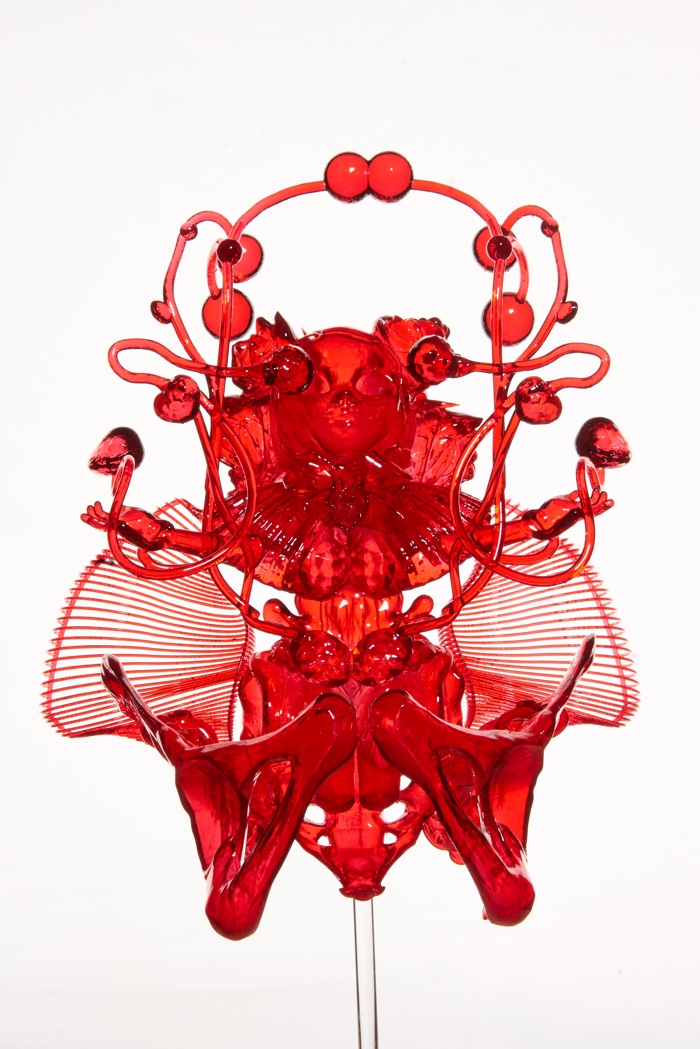
Pınar Yoldaş, Genetically Modified Generation (Designer Babies), 2016-2017
Pınar Yoldaş’ small 3D-printed models are accompanied by a publication that further explores the story of each baby. I found Genetically Modified Generation to be very moving. The beauty and delicacy of the tiny sculptures draws you into a nuanced and insightful meditation about the ethical dilemmas society would face if the gene editing technique was adopted without a rigorous public discussion of its impact on individuals and society.
Finally, and in the own words of the artist:
The bio-critical, techno-feminist aesthetic disrupts the mainstream media’s infantilizing superhero narrative that conditions us to think that we need saving instead of being able to change and develop our own world.
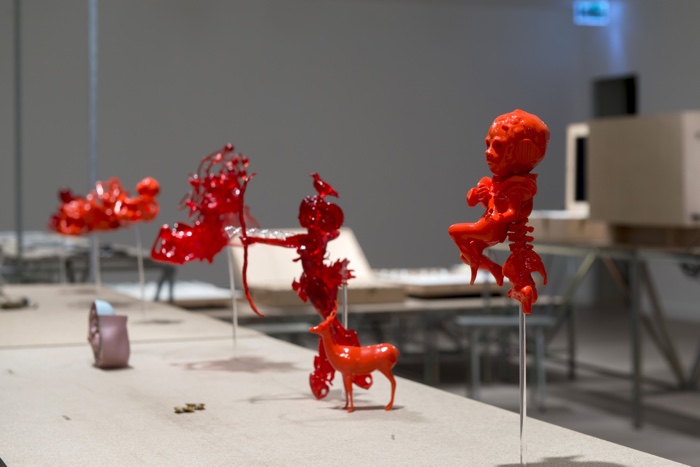
Pınar Yoldaş, Genetically Modified Generation (Designer Babies), 2016-2017. Installation view at the Scales School exhibition, Pera Museum. Photo by Kayhan Kaygusuz
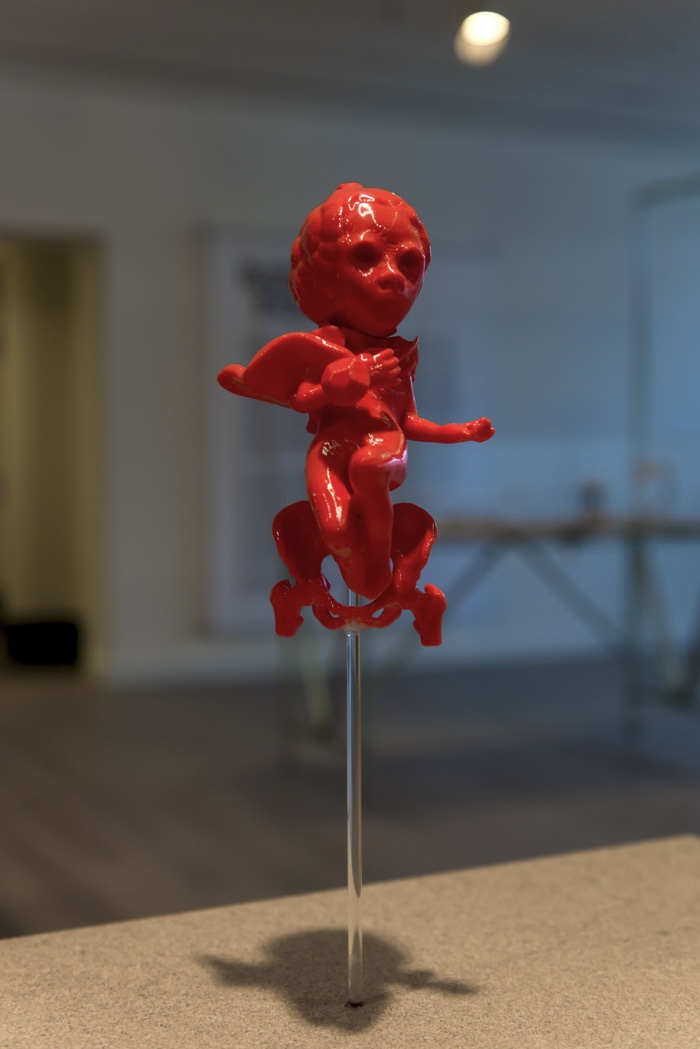
Pınar Yoldaş, Genetically Modified Generation (Designer Babies), 2016-2017. Installation view at the Scales School exhibition, Pera Museum. Photo by Kayhan Kaygusuz
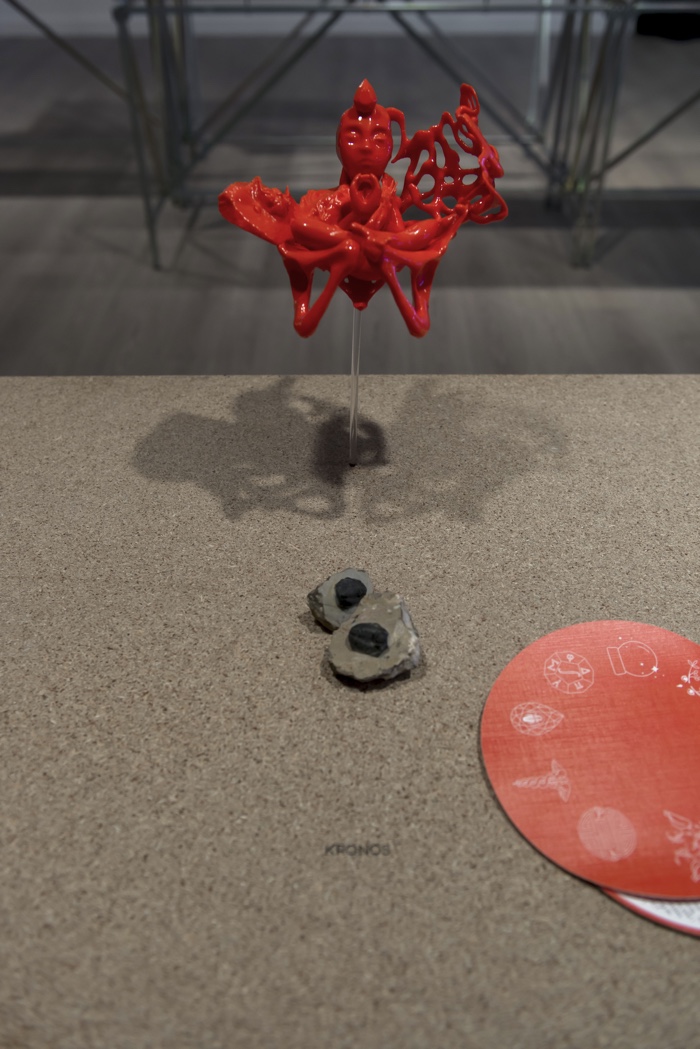
Pınar Yoldaş, Genetically Modified Generation (Designer Babies), 2016-2017. Installation view at the Scales School exhibition, Pera Museum. Photo by Kayhan Kaygusuz
A School of School, the 4th Istanbul Design Biennial is curated by Jan Boelen and organised by the Istanbul Foundation for Culture and Arts (IKSV). The exhibitions remain open at various locations in Istanbul until 4 November 2018.
Also part of the biennial: Halletmek. The Turkish art of speeding up design processes.


